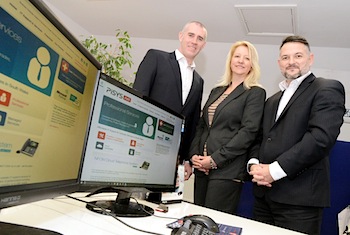The EU's decision to block the acquisition of O2 by Hutchison under the EU Merger Regulation has been welcomed by industry bodies ITSPA and the Federation of Communication Services (FCS). Eli Katz, the Chair of ITSPA, stated: "If the deal had gone ahead it would have resulted in price rises, negatively impacting UK consumers.
"ITSPA feels that a competitive landscape in the UK telecom market is vital to provide the best outcomes for consumers and businesses. A reduction from four to three mobile network operators would have threatened this.
"The Commission was right to state that merger would have resulted in fewer MNOs willing to host virtual operators, consequently the damage to the MVNO market would have hindered innovation and competition, resulting in negative outcomes for UK consumers."
FCS CEO Chris Pateman also welcomed the news. "We are pleased to see the EU has taken such a strong line on this merger," he stated. "Hutchison's proposed 'remedies' amounted to little more than a licence to re-arrange the deck chairs. They fell well short of what is needed to genuinely encourage innovation on anybody's terms but the incumbent operators'.
"The big issue goes far deeper than agreeing terms to merge two tentacles of what amounts to a four-armed monopoly. The mobile phone market in the UK - and indeed across the EU - needs some fundamental reform.
"To really drive innovation, encourage competition and deliver consumer value in mobile telephony requires the kind of wholesale competition we currently take for granted across the fixed line networks.
"That's something no merger enquiry will ever deliver by itself. It requires EU-level vision and Government-level commitment to push for the rights of consumers against the vested interests of corporate providers.
"The EU has tinkered at the edges with its welcome roaming commitments and price caps. But it's competition, not bureaucracy, which will deliver sustainable consumer choice. And there's no real sign of any willingness to deliver that big-picture view."
John Colley, of Warwick Business School, is a Professor of Practice in the Strategy and International Business group and researches large takeovers. He is also a former MD of a FTSE 100 company.
Commenting on the news he said: "It comes as little surprise that the EU competition authorities have said enough is enough on the rapid concentration of the UK mobile telecoms sector.
"Following the merger of T-Mobile with Orange, subsequently purchased by BT, the industry was reduced to four players. The proposed merger of Three with O2 would have made it three players and the evidence from markets elsewhere shows that three players results in higher prices for consumers compared to four. In effect competition reduces and the consumer pays the price for that.
"It is clear that the merger would have substantially reduced costs in requiring less shops, marketing, administration, head offices and there would have been benefits in terms of reduced network operating costs. However, the reduced competition would have meant that Three/O2 would not have to pass those savings on to the consumer."

 Openreach customer service engineer Alex Lacey came to the aid of an injured runner 24 miles into this year's London Marathon and carried him to the finish line.
Openreach customer service engineer Alex Lacey came to the aid of an injured runner 24 miles into this year's London Marathon and carried him to the finish line. IT support business Pisys.net has reached the £1m revenue milestone and marked the achievement with the launch of a national franchise with new operations in three locations across the UK.
IT support business Pisys.net has reached the £1m revenue milestone and marked the achievement with the launch of a national franchise with new operations in three locations across the UK.